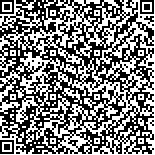| 引用本文: |
张雨辰,许明,刘琼,胡碧浓,唐丽亚,张泓,艾坤.电针通过调节膀胱及尿道平滑肌中的血清素受体表达改善骶上脊髓损伤大鼠的排尿功能[J].湖南中医药大学学报,2024,44(2):307-313[点击复制] |
|
| |
|
|
| 本文已被:浏览 548次 下载 289次 |
| 电针通过调节膀胱及尿道平滑肌中的血清素受体表达改善骶上脊髓损伤大鼠的排尿功能 |
| 张雨辰,许明,刘琼,胡碧浓,唐丽亚,张泓,艾坤 |
| (湖南中医药大学针灸推拿与康复学院, 湖南 长沙 410208) |
| 摘要: |
| 目的 观察电针治疗后骶上脊髓损伤(suprasacral cord injury,SSCI)大鼠的膀胱最大容量(maximum cystometric capacity,MCC)、漏尿点压力(leakage point pressure,LPP),结合分析逼尿肌、内尿道括约肌(internal urethral sphincter,IUS)中血清素(5-hydroxytryptamine,5-HT)不同亚型受体的表达,探讨电针治疗通过突触后5-HT受体调节逼尿肌-尿道括约肌协同失调(detrusor sphincter dyssynergia,DSD)大鼠排尿功能的效应机制。方法 36只SD雌性大鼠,随机抽取12只作为空白组,剩余24只采用改良Hassan Shaker脊髓横断法在T10脊髓节段全横断制作SSCI大鼠模型,成模后随机分为模型组和电针组,每组12只。电针组取次髎、中极、三阴交穴予持续电针刺激40 min,1次/d,连续治疗7 d;空白组与模型组只捆绑不治疗。采用膀胱造瘘法进行尿流动力学检测;处死大鼠后取逼尿肌和近端尿道组织,采用Western blot法检测5-HT受体含量。结果 模型组大鼠MCC、LPP显著高于空白组(P<0.01);电针组MCC显著低于模型组且高于空白组(P<0.01),LPP显著低于模型组(P<0.01)。与空白组比较,5-HT1A受体在模型组大鼠逼尿肌中表达显著降低(P<0.01),IUS中显著增高(P<0.01);电针组大鼠逼尿肌中5-HT1A受体显著高于模型组(P<0.01),IUS中5-HT1A受体低于模型组(P<0.05),但仍显著高于空白组(P<0.01)。模型组大鼠逼尿肌中5-HT2B受体表达高于空白组(P<0.05);电针组大鼠逼尿肌中5-HT2B受体表达低于模型组和空白组(P<0.05)。与空白组比较,5-HT7受体在模型组大鼠逼尿肌中表达显著降低(P<0.01),IUS中表达显著增高(P<0.01);电针组大鼠逼尿肌和IUS中5-HT7受体的表达均低于模型组(P<0.05)。结论 电针刺激SSCI后DSD大鼠次髎、三阴交、中极穴引起膀胱及尿道平滑肌中5-HT受体表达变化,5-HT1A和5-HT2B受体可能通过Ca2+流入使平滑肌产生相性和/或强直性收缩,5-HT7受体可能通过环磷酸腺苷(cyclic adenosine monophosphate,cAMP)途径影响大电导Ca2+激活K+(big-conductance Ca2+-activated K+,BK)通道活性介导平滑肌松弛,电针治疗由此抑制逼尿肌过度活动、增加其收缩能力并协调尿道阻力以改善SSCI后DSD大鼠下尿路功能。 |
| 关键词: 神经源性膀胱 膀胱平滑肌 膀胱部分出口梗阻 外尿道括约肌爆发模式 尿道Cajal间质细胞 机械拉伸 平滑肌张力 |
| DOI:10.3969/j.issn.1674-070X.2024.02.019 |
| 投稿时间:2023-10-18 |
| 基金项目:国家自然科学基金面上项目(81874510);国家自然科学基金青年项目(82205255);湖南省自然科学基金青年项目(82019JJ50437,2022JJ40312);湖南省教育厅科研项目(20C1432);湖南省大学生创新创业训练计划项目(S202110541019)。 |
|
| Improvement of electroacupuncture in urinary function of rats with suprasacral cord injury by regulating the expressions of serotonin receptors in the smooth muscles of the bladder and urethra |
| ZHANG Yuchen,XU Ming,LIU Qiong,HU Binong,TANG Liya,ZHANG Hong,AI Kun |
| (School of Acupuncture-moxibustion, Tuina and Rehabilitation, Hunan University of Chinese Medicine, Changsha, Hunan 410208, China) |
| Abstract: |
| Objective To observe the maximum cystometric capacity(MCC) and leakage point pressure(LPP) of rats with suprasacral cord injury(SSCI) after electroacupuncture(EA) treatment, and to analyze the expressions of different subtypes of serotonin 5-hydroxytryptamine(5-HT) receptors in the detrusor and internal urethral sphincter(IUS), so as to explore the effect mechanism of EA in regulating the urinary function of rats with detrusor sphincter dyssynergia(DSD) through postsynaptic 5-HT receptors.Methods Twelve of 36 SD female rats were randomly selected as blank group. The remaining 24 rats were made into SSCI models by modified Hassan Shaker spinal cord transection at T10 segment, which were randomized into model group and EA group after modeling, with 12 rats in each. EA group was given continuous EA stimulation at the acupoints of "Ciliao(BL32)" "Zhongji(CV3)" and "Sanyinjiao(SP6)" for 40 min, once a day, for consecutive seven days; blank and model groups were only bound without any treatment. The urodynamic test was performed by cystostomy. After the rats were sacrificed, tissues of the detrusor and proximal urethra were taken, then Western blot was used to check the content of 5-HT receptors in them.Results The MCC and LPP of model group were significantly higher than those of blank group(P<0.01); the MCC of EA group was significantly lower than that of model group and higher than that of blank group(P<0.01), and the LPP was significantly lower than that of model group(P<0.01).Compared with blank group, the expression of 5-HT1A receptor showed a significant decrease in the detrusor of model group(P<0.01) and a significant increase in the IUS(P<0.01). The expression of 5-HT1A receptor in the detrusor of EA group was significantly higher than that of model group(P<0.01), and its expression in the IUS of EA group was lower than that of model group(P<0.05),but still significantly higher than that of blank group(P<0.01). The expression of 5-HT2B receptor in the detrusor of model group was higher than that of blank group(P<0.05); its expression in the detrusor of EA group was lower than that of model and blank groups(P<0.05). Compared with blank group, the expression of 5-HT7 receptor in the detrusor significantly decreased(P<0.01) and that in the IUS significantly increased(P<0.01) in the model group; its expression in the detrusor and IUS of EA group was lower than that of model group(P<0.05).Conclusion EA stimulation at the acupoints of "Ciliao(BL32)" "Sanyinjiao(SP6)" and "Zhongji(CV3)" of DSD rats after SSCI can induce changes in the expressions of 5-HT receptors in the smooth muscles of the bladder and urethra. 5-HT1A and 5-HT2B receptors may cause phasic and/or tonic contractions of smooth muscles through Ca2+influx; 5-HT7 receptor may mediate the smooth muscle relaxation by altering the big conductance Ca2+-activated K+(BK) channel activity through cyclic adenosine monophosphate(c AMP) pathway. EA treatment may improve the lower urinary tract function in DSD rats after SSCI by inhibiting overactivity of the detrusor, increasing its contractility, and coordinating urethral resistance through the above mechanism. |
| Key words: neurogenic bladder bladder smooth muscle partial bladder outlet obstruction external urethral sphincter bursting activity urethral Cajal mesenchymal cell mechanical stretch smooth muscle tension |
|

二维码(扫一下试试看!) |
|
|
|
|




